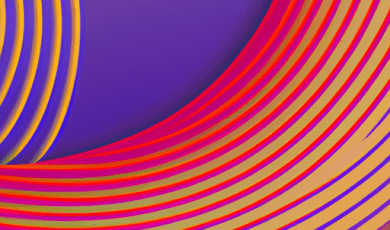
In today’s globalized world, the ability to communicate medical knowledge across linguistic boundaries is more critical than ever. The digital revolution—characterized by breakthroughs in information technology, artificial intelligence, and web development—has fundamentally transformed how medical translation services operate. This shift is not only enhancing accuracy and speed but is also democratizing access to medical information worldwide. For developers, translators, IT professionals, and AI enthusiasts, understanding the intricate evolution of medical translation is essential to staying relevant in both the healthcare and technology spheres.
How Technology is Transforming Medical Translation Services
The Importance of Medical Translation in a Digital World
The stakes in medical translation are incredibly high. A seemingly minor misinterpretation can lead to catastrophic outcomes, including misdiagnosis or inappropriate treatment. At the same time, the proliferation of telemedicine, multinational clinical trials, and global health crises (such as the COVID-19 pandemic) places unprecedented demand on accurate, scalable translation services. This is where the digital revolution comes into play, making high-quality medical translation accessible, efficient, and responsive to the needs of our interconnected world.
AI and Machine Learning: Ushering in a New Paradigm
Artificial intelligence (AI) and machine learning are leading the charge in this revolution. Modern translation engines leverage vast datasets, employing deep neural networks and sophisticated natural language processing algorithms to decipher complex medical terminology and contextual nuances. Unlike generic language translations, medical translation requires understanding of medical context, industry-specific jargon, and cultural factors affecting patient care.
For instance, AI systems are now capable of learning from millions of anonymized patient records and clinical reports, boosting the quality and contextual accuracy of translations between languages—whether it's a prescription label or intricate research protocols. Leveraging these AI-powered tools, medical translators can dramatically reduce turnaround times while maintaining the integrity and cultural sensitivity of the content.
Web Development: Centralizing and Curating Medical Translation Platforms
Robust web applications and cloud-based solutions have centralized medical translation workflows, facilitating real-time collaboration between healthcare professionals, translators, and subject-matter experts across continents. These web platforms offer intuitive interfaces, project management tools, and secure data exchange—key features that cater to the confidentiality demands of the healthcare industry.
Furthermore, API integrations enable seamless connection between electronic health record (EHR) systems and translation platforms, ensuring that translated documents are automatically synchronized with patient data. This level of interoperability means that health practitioners can instantly share and access essential translated materials, which is particularly valuable in emergency situations.
Quality Assurance with IT Solutions
Information technology plays a crucial role in maintaining and verifying the accuracy of medical translations. Translation Memory (TM) tools, terminology management databases, and version control systems are now standard components of professional medical translation services. These IT solutions allow linguistic experts to store, retrieve, and manage approved translations for common terms, drug names, and treatment protocols, significantly enhancing consistency across multilingual documents.
Automated quality checks can detect discrepancies, missing context, or outdated terminology, providing a powerful safety net before documents reach healthcare providers or patients. For complex cases, human experts still play a vital role, using advanced IT platforms to streamline review and validation processes.
The Ethical and Security Imperative
The transition to digital workflows introduces not just technological opportunities but also significant ethical and security challenges. Medical translation inevitably involves handling sensitive health information. Leading platforms address these concerns through robust encryption, secure authentication protocols, and compliance with strict regulations such as HIPAA and GDPR. Ensuring that digital medical translation tools protect patient privacy is a shared responsibility among IT specialists, developers, and translation service providers.
Real-World Impact of the Digital Revolution
Consider the growing prevalence of multinational clinical trials, where the accurate translation of informed consent forms, patient-reported outcomes, and regulatory documents can dictate the success of a study. Digital translation platforms allow pharmaceutical companies and research teams to coordinate and update documents across dozens of languages in real-time, greatly reducing the time to market for life-saving therapies.
In another example, hospitals equipped with digital translation interfaces can instantly provide patients with translated post-op instructions or medication guides, reducing the risk of non-compliance or adverse reactions. Telehealth platforms, powered by real-time language services, ensure equal access to quality care regardless of a patient’s native language—a powerful testament to the impact of digital innovation in medical translation.
Opportunities for Developers, Translators, and AI Enthusiasts
For Developers and IT Professionals
The digital transformation in medical translation creates space for innovative developers and IT specialists. Opportunities abound in developing more secure platforms, creating scalable APIs, and enhancing the user experience in translation management systems. Cybersecurity and data privacy are especially hot fields given the sensitivity of medical data.
For Translators
Language professionals are expected to combine their linguistic expertise with proficiency in digital tools and platforms. By embracing technology—such as AI-powered CAT tools, workflow automation, and quality assurance software—translators can deliver faster, more accurate results while focusing their efforts on nuanced, context-rich content that machines cannot yet master.
For AI Researchers and Data Scientists
The unique challenges of medical language—complex syntax, domain-specific terminology, and rapidly evolving knowledge—provide fertile ground for AI research. NLP experts and data scientists are developing new corpora, algorithms, and training models specifically tailored for [medical translation services](https://www.polilingua.com/medical-translation-services.htm), making it a cutting-edge field at the intersection of technology and global health.
Embracing the Future of Medical Translation
The digital revolution is redefining what’s possible in the world of medical translation. Enhanced by AI, refined with robust IT solutions, and empowered by seamless web interfaces, medical translation services are now more accurate, efficient, and secure than ever before. For tech and language professionals alike, adapting to these technological advancements offers a pathway to increased impact and global relevance.
Whether you’re a developer building the next generation of secure translation platforms, a translator integrating AI into your workflow, or an AI researcher tackling the complexities of medical language, the intersection of technology and medical translation is brimming with opportunity. For those seeking specialized expertise or partnership, platforms like medical translation services provide curated solutions that blend linguistic proficiency with digital innovation.
As healthcare and technology continue to converge, one thing is certain: the future of medical translation is bright—and digital. Staying informed, skilled, and adaptable will ensure that you’re not only prepared for this revolution but are actively contributing to a healthier, more connected world.








